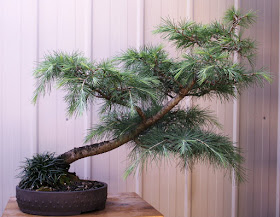| General Information |
| Common Name | Deodar Cedar |
| Scientific Name | Cedrus deodara |
| Sun Tolerance | Full Sun |
| Height | 40 - 50 m (131 - 164 ft) |
| Spread | 15 -20 m (50 - 66 ft) |
| Growth Rate | Fast |
| Bloom Time | Spring |
| Color | Green, |
| Flower Color | Green |
| Type | Tree |
| Native | Africa, Asia, Europe. |
|
|
| Classification |
| Kingdom | Plantae – Plants |
| Subkingdom | Tracheobionta – Vascular plants |
| Superdivision | Spermatophyta – Seed plants |
| Division | Coniferophyta – Conifers |
| Class | Pinopsida |
| Subclass |
|
| Order | Pinales |
| Family | Pinaceae – Pine family |
| Genus | Cedrus Carr. – Cedar |
| Species | C. deodara |
|
|
 |
| Cedrus deodara – Deodar Cedar |
Cedrus deodara commonly known as Deodar Cedar also known as
Himalayan cedar. It is native to Western Himalaya, India. It is a large growing
evergreen tree that grows 40–50 m (131–164 ft) in height sometime grows up to
60 m (197 ft) with a trunk up to 3 m (10 ft) in diameter.
The Deodar Cedar Differs principally from the Atlas Cedar in
having a flexible, pendulous leader; and differs from both the Atlas and the
Lebanon Cedar in having longer needles, pendulous tips to the branches and
larger barrel-shaped cones. Furthermore, it is a relatively taller, more
graceful and erect tree than either of the other cedars. The tree is a native
of the western Himalayan ranges of India, and was introduced to Britain in 1831
and 1841.
The trees are conical when young, later developing massive
trunks and large often spreading branches. The branchlets are of two kinds: the
long terminal gracefully drooping growth shoots with needles scattered around
them (‘juvenile’ foliage), and short spur growths with needles in rosettes.
The young needles are yellowish. The mature needles are from
1-2 inches in length, and a soft shade of green.
Both sexes of flowers are usually found on different
branches of the same tree, though whole trees may be of one sex. The male
catkins are long and erect, dull greyish-green with a purplish bloom,
liberating bright yellow pollen in autumn. The females are small, greenish,
erect conelets. The resultant erect resinous barrel-shaped green cones, up to 5
inches long, do not reach full size until after two years, when they turn brown
and ripen within a few months. They then gradually break up to release their
winged seeds, the central spike of the cone alone remaining.
Like as the Atlas Cedar, at first the bark is smooth and
grey, but with age becomes brown, furrowed and scaly. The wood has a narrow
whitish sapwood and a mid-brown heartwood, and is fairly hard, fragrant,
naturally durable, and will work to a fine finish. It is scarce, hence little
used commercially.























1 comment:
Very interesting blog. A lot of blogs I see these days don't really provide anything that attract others, but I'm most definitely interested in this one. Just thought that I would post and let you know.
Post a Comment